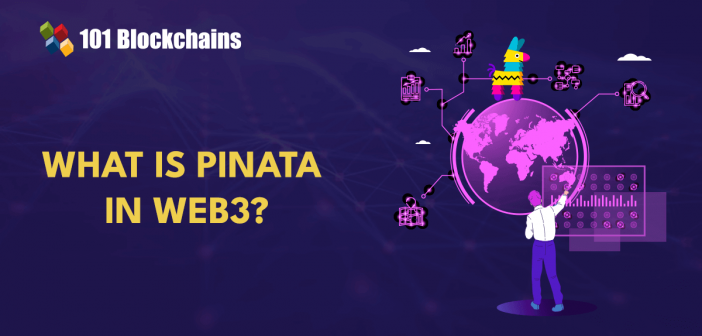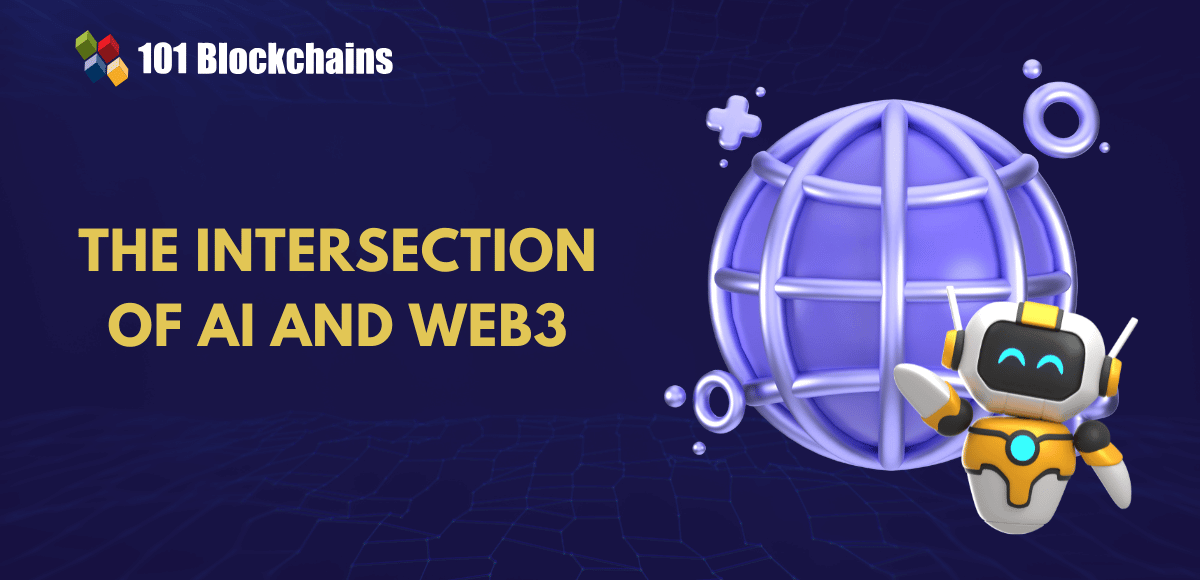Learn how blockchain truly works, master key definitions, and uncover what makes smart contracts so "smart." Dive into the fundamentals, gain valuable insights, and start your blockchain journey today!

- Web3
Georgia Weston
- on August 04, 2023
What is Pinata and how it helps to build the future of web3?
The rapid scale of development in the web3 landscape has become one of the common headlines in news about technology. One of the most prominent highlights in the web3 ecosystem is the popularity of non-fungible tokens. In addition, many other web3 projects and dApps have emerged as powerful contributors to the transformation of the existing digital landscape. If you are looking for answers to “What is Pinata in Web3?” you should prepare to embrace an innovative web3 tool.
Pinata is an emerging web3 development platform that offers the advantage of scalable storage through IPFS. It has proved successful in identifying easier and more efficient ways to develop decentralized apps and NFTs. Most important of all, Pinata was successful in raising funds amounting to $21.5 million in 2022 for optimizing NFT distribution. The following post offers an introductory guide to Pinata, its essential components, and its working.
Definition of Pinata
Pinata claims that it is an NFT media management service. However, different perspectives on Pinata explained how it can work as a powerful web3 development platform. Pinata can help users in hosting, managing, and sharing files of any type on the blockchain platforms suited to their preferences. The technical definition of Pinata would paint it as an IPFS pinning service. It could serve as an effective, fast, and easy platform for helping technical as well as non-technical creators in sharing content without restrictions.
Developers can use Pinata IPFS features for pinning their content to IPFS. As a result, it can help them in creating web3 applications without the need for developing and managing their personal IPFS nodes. The platform supports developers by managing the storage infrastructure without the need for frequent manual interventions.
NFT and web3 creators could use Pinata for serving content without the concerns of scale. Most important of all, creators don’t need technical experience to use the Pinata web3 development platform. Anyone could start using Pinata without concerns regarding learning technical aspects in web3 or IPFS. Therefore, it has become one of the most preferred web3 tools within a short period of time.
Build your identity as a certified blockchain expert with 101 Blockchains’ Blockchain Certifications designed to provide enhanced career prospects.
How Does Pinata Work?
The next important highlight in a guide to Pinata is the explanation for its working mechanism. How does Pinata help NFT creators and web3 developers in creating new web3 projects at scale? You can find the answer to this question in two distinct terms, which come together to make Pinata work. The two terms are IPFS and pinning. Here is an overview of how IPFS and pinning make Pinata a unique web3 development platform.
-
IPFS
Interplanetary File System, or IPFS, might seem like a word you might come across in science-fiction novels and movies. However, it is just a sophisticated protocol that can help in hosting large volumes of content data. One of the significant aspects of the foundations of Pinata explained the necessity for offering a scalable storage solution to web3 creators. IPFS can help in hosting content that is large for blockchain networks on decentralized P2P networks. At the same time, IPFS also leverages cryptography to ensure immutable data storage.
An Interplanetary File System network serves as the ideal option for NFT projects which plan on transferring control to distributed networks. Creators could achieve decentralization of their NFT or web3 projects without the risks of modifications. Most important of all, IPFS ensures that creators have complete ownership of their assets and the methods for sharing them.
-
Pinning
The second important term in the working of Pinata is pinning. Pinning data on IPFS nodes instructs the node about the significance of data and the necessity for saving it. The IPFS node is an application that connects to the IPFS network for storing files. The answers to “What is Pinata in Web3?” draw attention to the unique approach it has introduced for data storage. Pinning is an essential tool for preventing anyone from deleting important data from the IPFS node. Only the owner of the node could control the node and pin data on it. On top of it, users could not force other nodes to pin their data for you on the IPFS network.
Users have to operate their individual IPFS nodes to guarantee that the content remains pinned on the IPFS network. After pinning a file on the IPFS network, you have complete control over sharing, distribution, and monetization of the file.
How Can You Upload a File to IPFS with Pinata?
Users can start exploring the features of Pinata by creating an account. Upon logging in to the Pinata account, you can notice the account dashboard. You can find three Pinata IPFS pinning options, such as Content Identifier or CID, File, and Folder. Pinata supports uploading different types of files, such as video, text, apps, audio, and images.
Users could also upload a complete folder of data, such as a collection of NFT marketplace assets while ensuring security. CID or Content Identifier is a distinct string of numbers and letters representing NFTs. The CID serves as proof of your ownership of the NFT. Interestingly, it is impossible to change a CID after uploading it on the IPFS network.
The next step for web3 creators is to ensure that their audience can access their assets or projects. If an NFT artist wants to fetch NFT data from IPFS for their audience, they should ensure that the target audience can access their assets quickly. However, public gateways could slow down the response times, thereby calling for dedicated gateways.
The Pinata web3 development platform offers the option of creating a dedicated gateway for assets you have pinned on the IPFS network. Dedicated gateways could solve multiple problems, such as rate-limiting alongside offering the facility for branding the gateway. As a result, web3 creators could create a more immersive brand experience for their audience.
Want to get an in-depth understanding of non-fungible tokens (NFTs)? Enroll Now in NFT Fundamentals Course.
What is the Pinata API?
Another prominent highlight in the introduction to Pinata is the Pinata API. As a matter of fact, Pinata API is the primary user interface of the Pinata platform. The responses for ‘how to use Pinata API’ would help you learn about its uses for listing content, adding metadata, and all IPFS pinning functions. You can find out more about the functionalities of Pinata API by exploring the following important functionalities.
-
Authentication
You can connect with the Pinata API by generating Pinata API Keys. Web3 creators could generate new keys from the Pinata API Keys page on the platform’s interface. Upon clicking on the “New API Key” option, you will find the prompts for selecting permissions.
In addition, have to choose the number of times the key can be used. It is important to note that admin privileges could guarantee access to every API endpoint. On top of it, developers could also specify particular endpoints through expansion of parent route of the endpoint and a few tweaks in the permission settings.
The working of Pinata explained for beginners must also reflect on the fact that all Pinata API Keys are built for unlimited use. Creators can use a Key Name to ensure easier identification of a specific key and its importance. You should also note the facility of a ‘Revoke’ button which allows revoking access to any key. After revoking a key, creators cannot use it for any other application.
-
How Can You Connect to the Pinata API?
It is important for a beginner to learn how to connect to the Pinata API to access all its functionalities. The simplest answers for ‘how to use Pinata API’ start with the base URL to request the Pinata API, which is,
https://api.pinata.cloud
Web3 creators can identify two distinct approaches for connecting with the Pinata API, such as custom headers and bearer authentication. With the bearer authentication model, you would require the JWT created at the time of generating API keys. The JWT token could also serve as an ‘Authorization’ header for all API requests with the format,
"Authorization": "Bearer YOUR_JWT" On the other hand, the custom headers model requires two distinct headers such as, pinata_api_key: (personal pinata api key) pinata_secret_api_key: (personal pinata secret api key)
The JWT Bearer Authentication model offers better simplicity than the custom headers model for connecting to the Pinata API.
Curious to develop an in-depth understanding of web3 application architecture? Enroll Now in Web3 Application Development Course!
What are Users Endpoints?
The Users endpoints are another crucial component in the working of Pinata. The Users endpoints help in development and management of API keys for Pinata API. On top of it, the endpoints also help in generating scoped keys with a specific number of uses and revoking access to keys. The three Users endpoints include,
- Generate Pinata API Key
- List Pinata API Keys
- Revoke Pinata API Key
What are Pinning Endpoints?
Pinning endpoints are also a noticeable component in explanations for the working of Pinata IPFS networks. The interesting highlight about pinning endpoints is that they are required for all tasks which involve pinning files to IPFS network. Creators should use the pinning endpoints from server environment for safeguarding API keys.
Build your fluency in Web3 and develop decentralized solutions with the world’s first Web3 Expert Career Path with quality resources tailored by industry experts Now!
What are the Features and Tools of Pinata?
The technical aspects of Pinata prove that it has been tailored to offer a secure and scalable storage platform for web3 content. Developers and creators could share their content at a faster speed with security and better scalability. However, a general user would look for the tools and features that make Pinata an effective web3 development platform. Here are some of the most noticeable features you can explore in Pinata.
-
NFT Content Management
Most of the answers to “What is Pinata in Web3?” would point to its identity as an NFT data management service. It can help developers in creating decentralized NFT projects while retaining control over their NFT data. Pinata ensures that web3 developers can create, store, and share their data in a faster and more secure way.
-
Speed and Security for IPFS Upload
When you upload content to IPFS, Pinata focuses on ensuring a faster and more secure uploading process for NFTs and web3 projects.
-
In-built CDN
Another prominent highlight of the features of Pinata explained for beginners point at the in-built CDN or content delivery network. Pinata has more than 200 server locations worldwide which helps in serving content within lesser time than required for loading a video on YouTube.
-
Submarining
Piñata has also introduced a creative approach for improving user engagement through unlockable content. The submarining feature helps NFT creators in developing excitement among their target audience for accessing unlockable content. It is important to remember that the submarining feature is available only with the paid plan of Pinata. NFT creators can set up the submarining feature by using Submarine app, while developers can use the API.
-
Video and Image Optimization
The features of Pinata also introduce groundbreaking developments in video and image optimization functionalities. NFT and web3 creators could use the Pinata web3 platform to optimize the video content and images according to their preferences. In-built video optimization features offer the ability to serve best video formats without concerns about fitting with formats supported on web2 platforms. Similarly, NFT creators could also find an effective way to draw the attention of their target audience with highest quality of images.
-
Rich Previews
You should also learn about the facility for capitalizing on the power of social media for your NFTs with Pinata. The Pinata IPFS pinning service is only one aspect of the platform. NFT creators and web3 developers could use in-built capabilities of Pinata for rich previews to enable personalization and sharing of NFTs on social media.
-
Community, Support, and Learning
The most valuable feature of the Pinata platform is the growing community on Twitter and Discord. On top of it, Pinata also offers a broad range of learning resources to answer different questions about the platform. The platform also guarantees responsive solutions to support queries with the help of a professional support team.
Learn the fundamentals, challenges and use cases of Web3.0 blockchain from the E-book: An Introduction To Web 3.0 Blockchain
Bottom Line
The arrival of web3 platforms like Pinata would offer motivation to many other projects in the web3 landscape. Pinata has earned the trust of users and investors with its powerful functionalities and consistent progress toward innovative developments. For example, the Pinata web3 platform has introduced the Submarine app to help users in sharing customized experiences, such as unlockable assets.
In addition, Pinata also offers easier access through the Pinata API, which helps in managing all your web3 assets from one place. The Pinata community is also growing with new users, thereby presenting valuable prospects for its future. Learn more about Pinata and how to use the web3 development platform now.
*Disclaimer: The article should not be taken as, and is not intended to provide any investment advice. Claims made in this article do not constitute investment advice and should not be taken as such. 101 Blockchains shall not be responsible for any loss sustained by any person who relies on this article. Do your own research!







